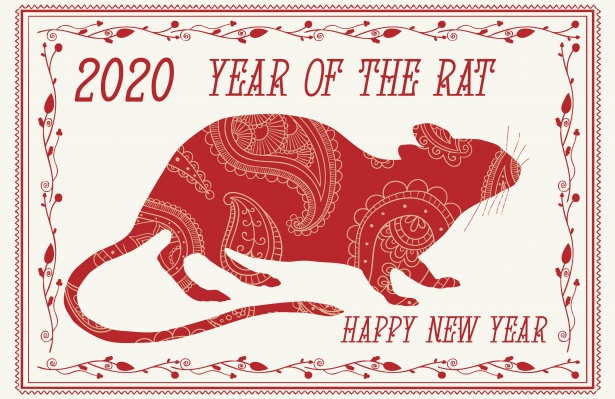Diving into the deep history behind the Chinese New Year
January 25, 2020
Chinese New Year is a beautiful festival that is celebrated worldwide, but many people do not know the interesting history behind it. The date of this event is chosen based on the lunar calendar. This means that it begins each time there is a new moon cycle. Because of this, its date on the Gregorian calendar, the one used the most worldwide and in the U.S., changes each year. Today marks the start of the Year of the Rat, but how did this fascinating holiday begin?
Originating from the mythical Nian, a beast known in China for its horrendous acts, the Chinese New Year began over 3,500 years ago. The story starts with Nian waking up every year on New Year’s Eve and eating crops, animals, and children to satisfy his hunger from being asleep the entire year. Families would stay inside to hide from his fury and keep their children safe. Then, a god disguised as a human came to the village and showed the people how to rid themselves of Nian. He explained that the beast was terrified of the color red, strange critters, and loud noises. That year the villagers covered the entire town with red decorations, put peculiar masks on their children, played drums and music, and set off fireworks. When Nian did not appear that year, the villagers made it a tradition to repeat the same events every lunar new year to ward him off.
As time went on, some aspects of the celebration changed. Firecrackers, socializing with friends and family, and eating traditional foods, like dumplings, became more prominent during the Tang, Song, and Qing dynasties. During the Qing dynasty, there was also the introduction of zodiacs. There are 12 zodiac signs, all based on animals, and one is given to each year. They were used to show respect to the animals and to show compatibility between people. Characteristics are given to each animal, so the Chinese people used them for guides in marriage, careers, and fortune-telling. This feature of the new year became especially important for the people because it set the mood for the rest of the year. As mentioned before, this year is the Year of the Rat. This means everyone born this year is likely to share some of the rat’s characteristics. These include being optimistic, stingy with money, and stubborn. Junior Emily Robinson believes that her zodiac sign, the goat, is accurate: “I do love taking care of people, and I feel like that is my niche in some areas which is in comparison to my zodiac sign as well. It also mentions a bit for the arts and creativity….seeing as I love to be just crazy and weird, kind of doing my own thing in life with theater, choir, and art!”
In 1912, the Chinese government banned the celebration and forced the adaption of the Gregorian calendars in order to make the Chinese people more connected to the rest of the world. The people resisted and continued to use their beloved lunar calendars and carry out their traditions. When the government realized that the ban would never be successful, they made a compromise: the use of the Gregorian calendar for governmental activities and the lunar one for traditional activities. The traditional new year was given the name Chunjie, for the Spring Festival, and was celebrated along with the Gregorian new year, Yuandan. In 1949, the Spring Festival became a nationwide holiday and has been celebrated around the world since then.












